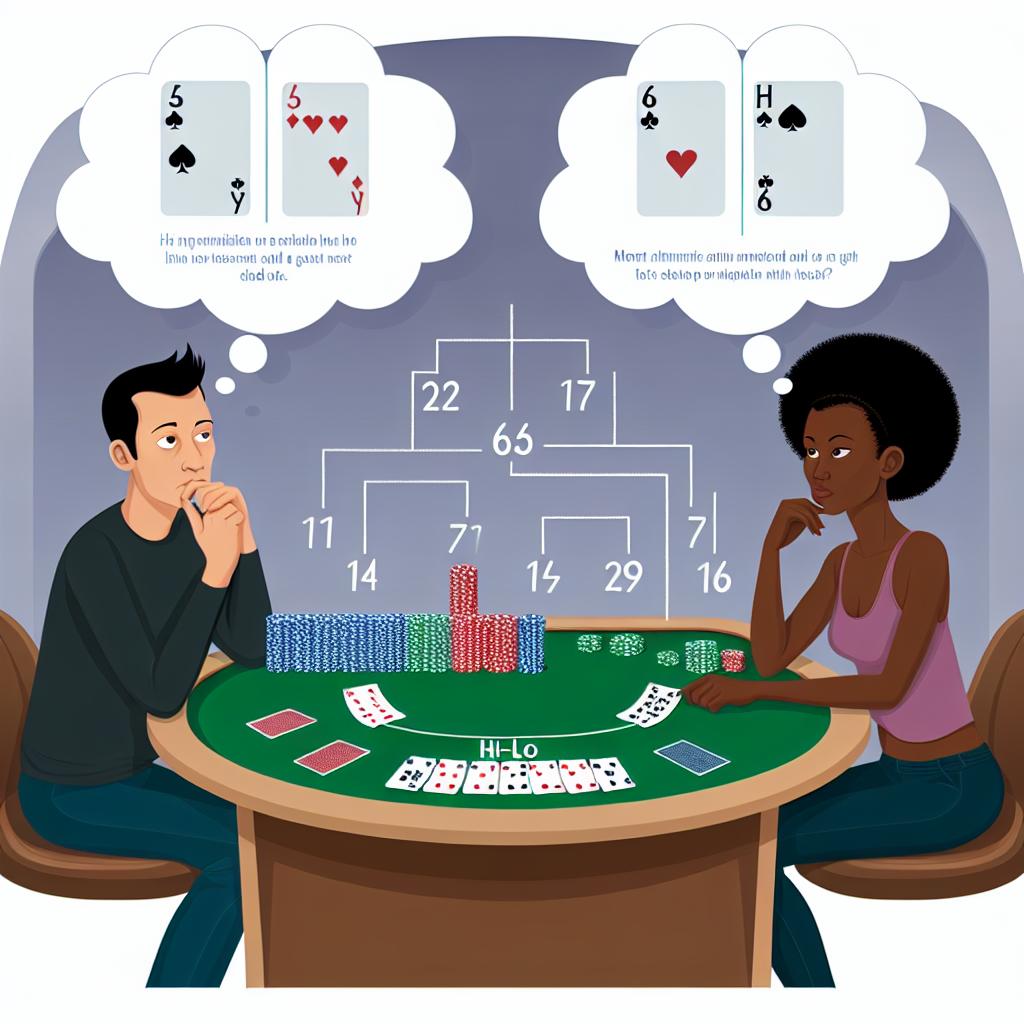Introduction to the Hi-Lo Card Counting System
The Hi-Lo card counting system is highly favored among blackjack players aiming to gain a strategic edge over the casino. This method, crafted in the 1960s by mathematician Harvey Dubner, enables players to track the ratio of high to low cards left in the deck. By understanding this ratio, informed decisions regarding bets and strategy during a game can be made with greater precision.
How the Hi-Lo System Works
At its core, the Hi-Lo system involves assigning point values to each card dealt. This technique simplifies the complex statistics of card counting by designating numbers 2 through 6 with a positive value of +1, numbers 7 through 9 with a neutral value of 0, and 10s, face cards (Jack, Queen, King), and Aces with a negative value of -1. As the game proceeds and cards are dealt, players maintain a running tally of these point values to help predict the composition of remaining cards in the deck.
By keeping this running count, players can estimate whether the deck is rich in high or low cards. A positive count suggests that a greater number of low cards have already been dealt, leaving a higher concentration of high cards still in play. Conversely, a negative count signals that more high cards have been dealt, altering the dynamics of potential future hands. When there’s an abundance of high-value cards in the deck, a player’s chances of achieving a blackjack or benefiting from favorable doubling down scenarios improve.
Betting and Strategy Adjustments
A sophisticated aspect of the Hi-Lo card counting system involves adjusting betting strategies according to what is known as the true count. The true count refines the running count by factoring in the number of decks remaining in the shoe, thus providing a more precise indicator. This calculation is straightforward: players divide the running count by the estimated number of decks still in play. For example, if the running count is +6 and only two decks remain, the true count would be +3, highlighting a higher likelihood of drawing high cards.
When the true count is favorable, players are encouraged to increase their wagers, capitalizing on the improved odds. A higher true count suggests potential for high-value cards, making conditions more favorable for the player. On the flip side, when the true count is low, a more conservative approach is warranted; players might opt to scale back their bets or even temporarily step away from the table until the conditions become more favorable once again.
Limitations and Considerations
Several challenges and considerations come into play with the Hi-Lo card counting system. Firstly, casinos have adopted techniques aimed at nullifying the advantages of card counting, such as implementing continuous shuffling machines or increasing the frequency of manual shuffles to disrupt the player’s count. Moreover, as the rules of blackjack can vary from one casino to another, players must adjust their Hi-Lo strategy accordingly, considering factors that could influence the house edge.
Discretion is equally as important for card counters. While card counting is a legal strategy, it is not appreciated by casinos and can lead to players being asked to leave or banned from the establishment. Thus, skilled counters often blend seamlessly with other patrons, ensuring their tactics don’t attract unwanted attention.
Further Learning
Mastering the Hi-Lo card counting system requires not only an understanding of its principles but also dedication to practice and real-world application. Though the methodology appears straightforward, achieving proficiency entails constant practice and possibly advancing to more intricate systems as one’s experience grows. There is a wealth of learning material, from books and articles to online courses and dedicated platforms, that offer structured learning paths for enthusiasts. These resources can deepen one’s comprehension of card counting, enabling players to refine their strategies, improve their tactical acumen, and explore advanced techniques.
For those keen on perfecting their card counting skills, various online resources exist that offer simulations, tutorials, and community engagement forums to provide support and continued learning opportunities. Aspiring players can benefit greatly from engaging with these educational avenues, embracing both the theoretical and practical aspects of card counting to enhance their prowess at the blackjack table. The journey into the world of card counting promises not just the thrill of the game but also the satisfaction of mastering a strategic skill honed over time with patience and discipline.

